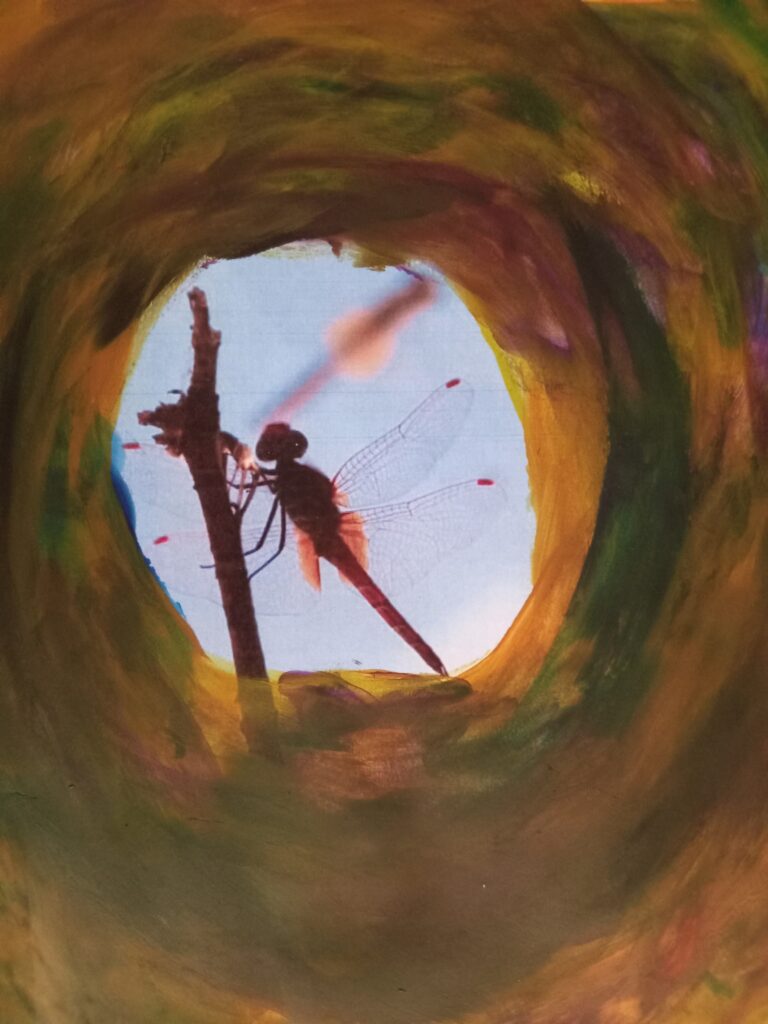
In 2012, I began my journey into the world of dragonflies and damselflies in Sudan, collectively known as Odonata. Their vivid colours, oversized eyes, and mighty wings captured my imagination, and I became fascinated with their distribution, behaviour, and efforts to conserve them.
My first surveys took place close to home—in my garden, along water canals, and in the temporary lakes surrounding my village in the East Nile region.
Living near the Nile River has always felt like a privilege. Here, one can endlessly observe aquatic life, watch sunsets, and enjoy coffee by the riverbank. Yet, my search for these incredible creatures soon extended beyond my village.


A dragonfly perches on a stick. Photos: The Niles / Esra Elfaki
I travelled across Sudan’s varied landscapes—from the deserts and semi-deserts in the North to the dense forests and green mountains in the West and even to the lutas ponds near the borders of South Sudan and Red Sea State in the East.
Sudan’s unique environments became intertwined with my own identity. I was drawn to the elements these insects depend on: lush greenery, clean air, clear water, and the freedom to move unencumbered.
Dragonflies are symbols of strength, courage, happiness, and spiritual growth across cultures. Their reliance on freshwater, especially for reproduction, underscores their importance to the ecosystem.
Nymphs shape aquatic habitats, while adults select their environments based on vegetation and other structural features. Due to their sensitivity to environmental shifts, such as deforestation and erosion, Odonata are indicators of human impact on the natural world.



Dragonflies during the day and at sunset. Photos: The Niles / Esra Elfaki
During the rainy season, dragonflies engage in peak activities—flying at dusk, hunting, mating, laying eggs, and resting among tree branches. My task has been to capture these moments.
By last year, we had identified 89 species in Sudan. However, this year, everything changed. The ongoing conflict introduced smoke, fire, and pollution, making the environment and my homeland unsafe. I was forced to leave Sudan, relocating to a country vastly different in climate and culture.


Biodiversity along the Nile in Sudan. Photos: The Niles / Esra Elfaki
In my new surroundings, I sincerely wish to return to a peaceful Sudan, where I can again document dragonflies gliding over a clean and healthy river. Like these insects, I yearn to flourish in the place I call home.